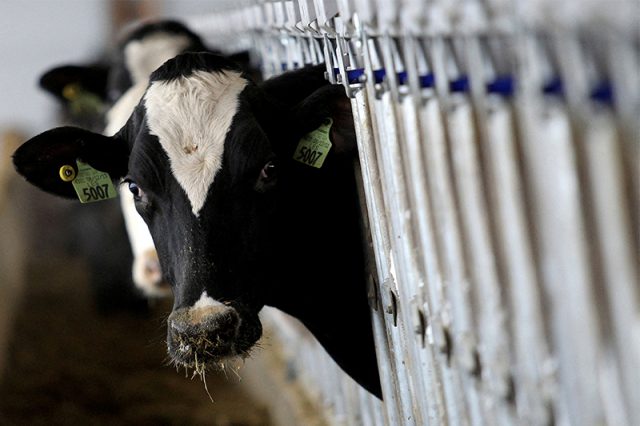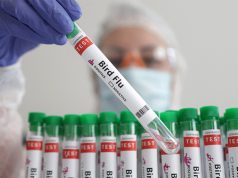
CHICAGO— A third U.S. dairy worker tested positive for bird flu after exposure to infected cows, and was the first to suffer respiratory symptoms, U.S. officials said early this month in the latest expansion of the outbreak.
Bird flu has been found in dairy cattle in nine states. This second case in a Michigan dairy worker was found through increased testing of people and cows in the state following the April 1 identification of a case in a Texas farm worker. Here’s what you need to know about the outbreak.
WHY IS H5N1 OR BIRD FLU A CONCERN?
Health officials say the risk to public health remains low.
But the spread of avian flu among dairy cattle reflects an expansion of the range of mammals that can be sickened by the virus that typically infects birds, and influenza experts said finding bird flu in humans was worrisome.
Scientists are on alert for changes in H5N1 that could signal the virus is adapting to spread easily among humans. The virus has caused serious or fatal infections among people in close contact with wild birds or poultry and has long been on the list of viruses with pandemic potential. Any expansion to a new mammal species is concerning.
The infections in cattle are from the same subtype of bird flu that has been infecting wild birds and poultry flocks globally for more than two years, also killing several mammal species that likely contracted the virus from consuming sick or dead birds.
HOW WIDESPREAD IS THE BIRD FLU OUTBREAK IN CATTLE?
The full extent remains unknown, but it may be in more herds than documented.
The U.S. Food and Drug Administration has said it detected fragments of the H5N1 virus in about 1 in 5 samples during a national survey of retail milk. It said tests of 297 samples found the remnants of virus were inactivated by the pasteurization process, and that the milk supply is safe. U.S. health officials believe people cannot get sick from drinking pasteurized milk but warn not to drink raw unpasteurized milk.
Officials have learned the virus can be present in cows that show no signs of infection.
WHEN DID THIS BIRD FLU OUTBREAK START?
U.S. officials had thought the outbreak was recent, but it may have started late last year.
A study funded by the U.S. Department of Agriculture and the Centers for Disease Control and Prevention published in May found bird flu was likely circulating on a limited basis as far back as late 2023. The study said it believed a wild bird transmitted the virus to cattle, which then expanded when the cows were shipped to other states.
HOW IS H5N1 SPREADING?
It remains unclear how the virus is spreading, but there is evidence of wild bird-to-cow, cow-to-cow, cow-to-poultry, and three cases of cow-to-human transmission. There is no evidence of human-to-human transmission, officials reiterated.
Because of the heavy viral load in milk and mammary glands, scientists suspect the virus is being spread to animals during the milking process, either through contact with infected equipment or with virus that becomes aerosolized during cleaning procedures.
It is not known if the virus can spread through respiratory droplets that infect the airway, as flu viruses typically spread in humans. Human symptoms have included conjunctivitis, or pink eye, and mild respiratory symptoms.
IS THERE A BIRD FLU VACCINE FOR HUMANS?
The U.S. has a stockpile of bird flu vaccines matched with the strain currently circulating, as well as antiviral drugs that could be used to treat human infections. For a major epidemic or a pandemic, the U.S. would have to scale up production considerably.
—Reporting by Julie Steenhuysen and Tom Polansek in Chicago; Editing by Caroline Humer and Bill Berkrot







